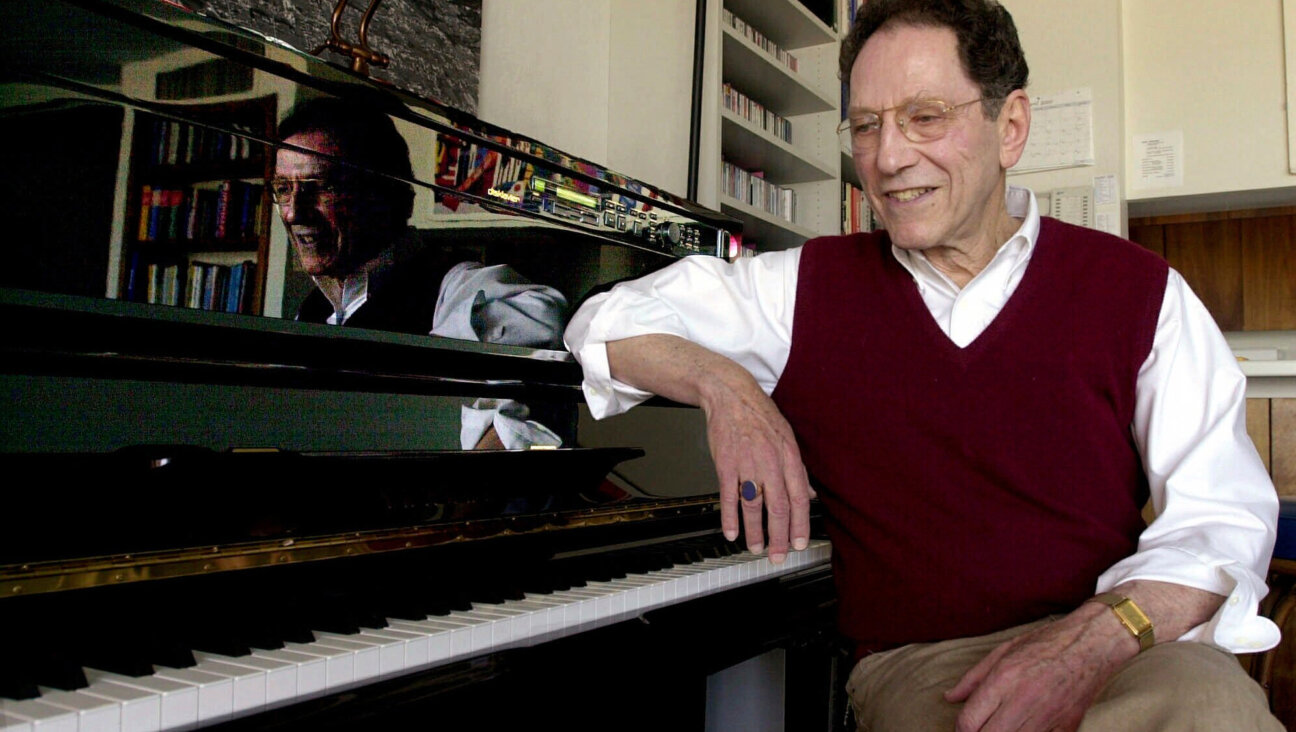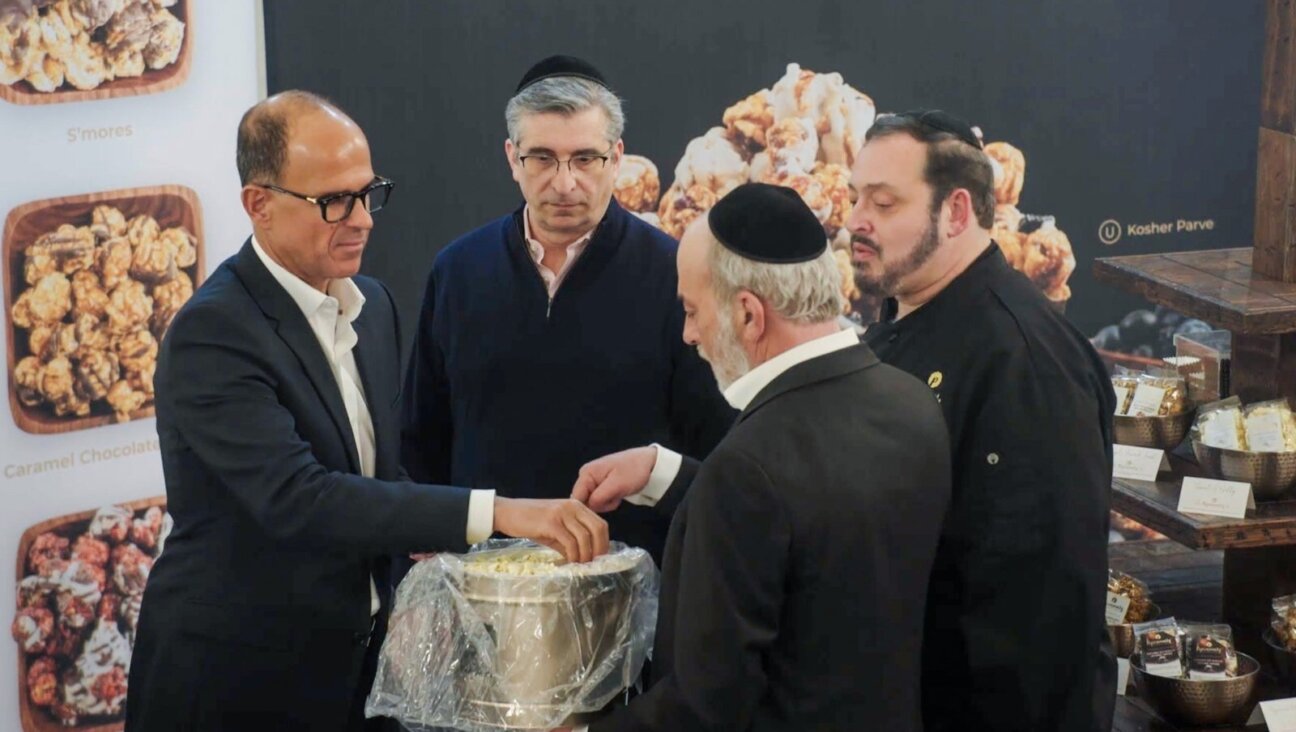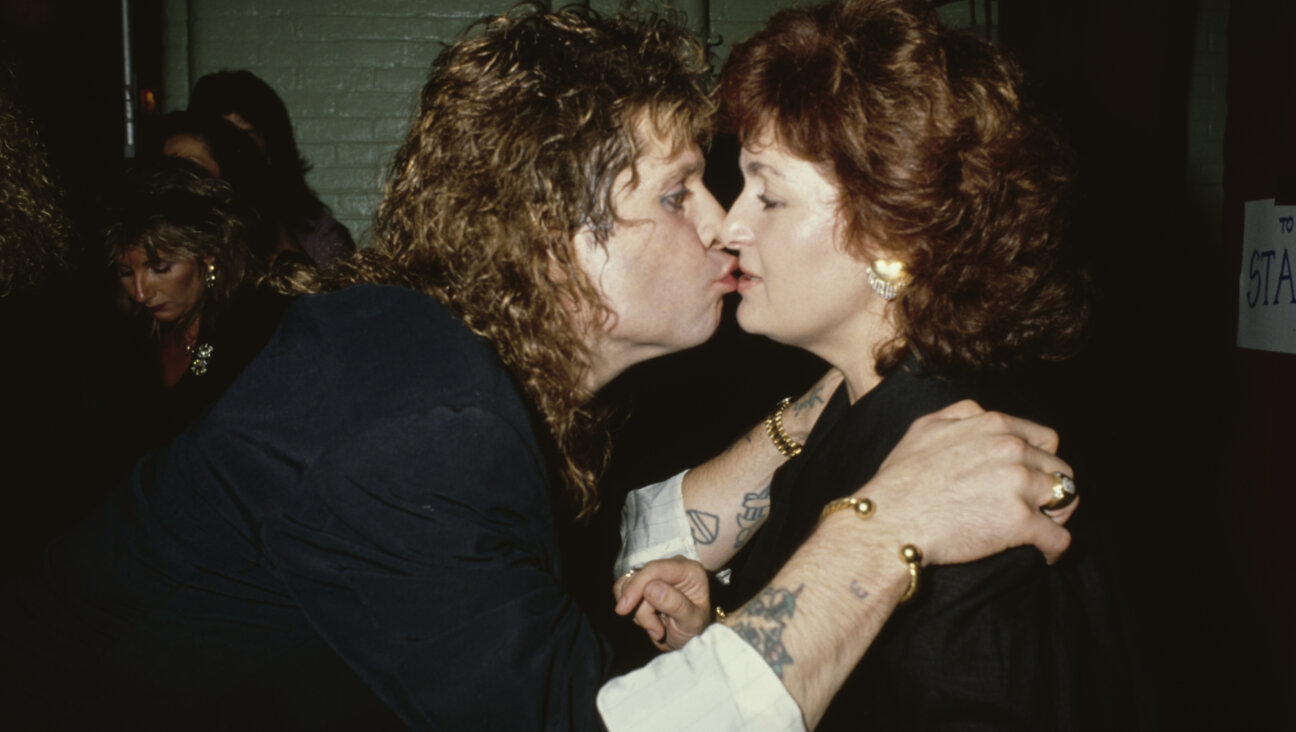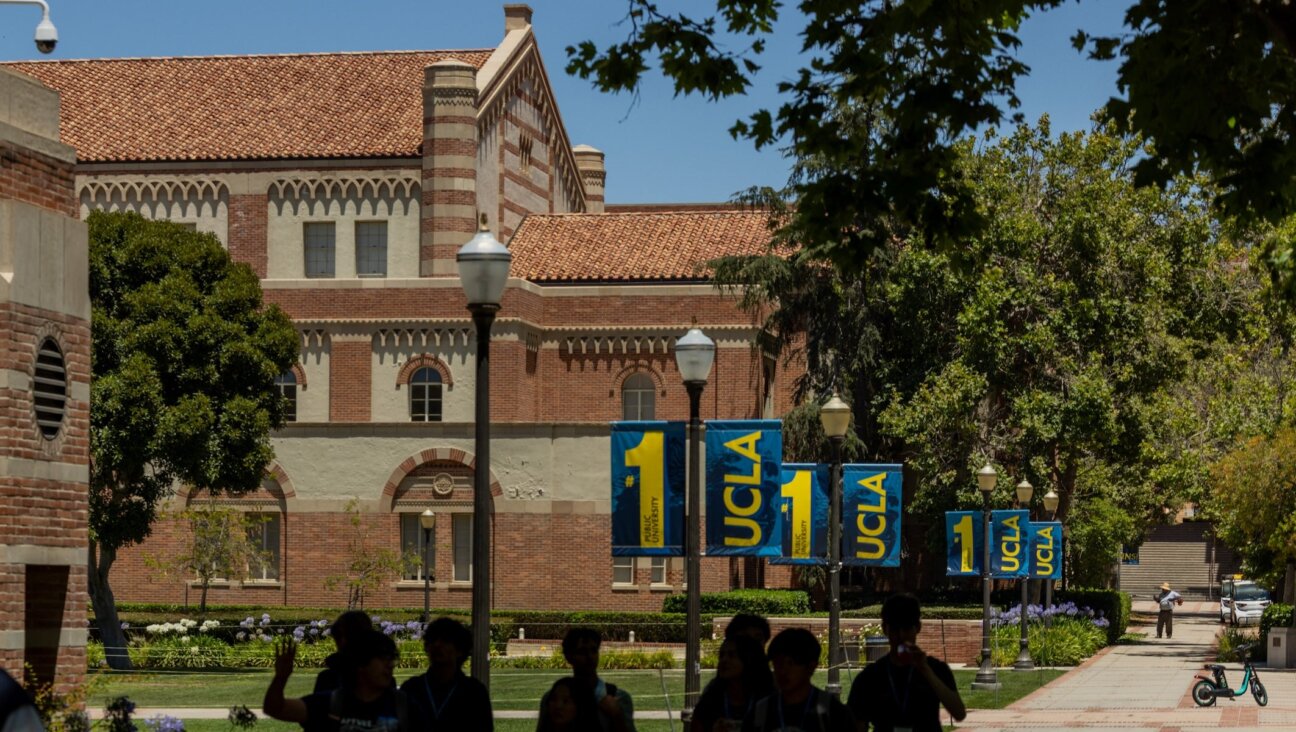Meet The Collectors Bringing Art Nouveau To Israel

Graphic by Angelie Zaslavsky
Art collector Anat Meidan came into a grainy focus over Google video, framed against a well-stocked bookshelf. Behind her, her house in the Tel Aviv neighborhood of Neve Tzedek looked airy and bright. Her husband Joe sat in on our interview, a large Art Nouveau poster hanging on the wall above his head.
Art Nouveau has been one of the couple’s guiding passions since the day, 30 years ago, when Meidan spotted two unusual vases in a London market and fell in love. Now, she has published her first book on the subject: “Art Nouveau in Buenos Aires: A Love Story.”

The interior of an original Art Nouveau style elevator, designed by Dubois and Pater, with all the fixtures intact. Image by Anat Meidan
The volume, part coffee table book, part memoir, and part art historical investigation, is a rare look at the impact of Belle Époque aesthetics on Argentina’s largest city.
Meidan’s vibrant photographs form a paean to the city’s Art Nouveau architectural features, from door gratings and staircases to the occasional mural plastering the side of a building. Her words, which detail her explorations of the city’s hidden wonders, illustrate the transforming grace of that omnipresent aesthetic on both personal and societal levels. The decorative style elevates Meidan’s consciousness, and she shows how it does the same for the spirit of the city. It’s difficult to imagine, looking at the richly detailed subjects of the book’s photographs, that life isn’t slightly sweeter when you exit and enter your apartment through a door smattered with iron roses.
For the Meidans, that’s an indubitable truth. That attitude sets them apart in Israel, where the artistic and architectural style, which was popular in the last decade of the nineteenth century and the first of the twentieth, isn’t well known.
When they moved to Buenos Aires for a year in 2000, Meidan found a postcard filled with photographs of the city’s Art Nouveau architectural details: Doors, domes, and more. That postcard launched her own hunt for such details, and she was nearly overwhelmed by the wealth she discovered.
“Door after door, gate after gate, every entrance I passed through revealed to me a dazzling new world,” she writes, in the introduction to “Art Nouveau in Buenos Aires.”
The book, published in the United States this spring, was nearly a decade in the making. Read excerpts of the Forward’s conversation with the Meidans, below.
Talya Zax: When did you begin to be interested by Art Nouveau? What sparked that interest?
Anat Meidan: I believe we started our collection 30 years ago. When I started it, when I saw the first two vases I bought in London, I didn’t even know how to spell the words Art Nouveau. From that moment when I found another piece of art, and Joe my husband found another piece of art, we understood we were in love with Art Nouveau style.
I wish we had a camera, so we could walk with you in our house. We have spoons, posters, paintings, furniture, everything. The important thing with Art Nouveau was their idea [that] everything in the house will be nice. You could see, it’s a place that we live, but it’s a museum.
Do you know of other significant Art Nouveau collections in Israel?
Joe Meidan: Art Nouveau is unique in Israel; we don’t know of other people who have a similar collection of Art Nouveau. On the other hand, there is a lot of art deco. People who immigrated from Europe to Israel in the 20s, 30s, or the 40s of the last century brought everyday furniture with them, so it happens that you find art deco articles and artifacts almost everywhere.
How do people react when they see your collection for the first time?
Anat Meidan: Speechless. Speechless. They can’t imagine that behind the wall there is such a collection.
Joe Meidan: We feel very proud of the fact that we were able to bring home pieces that are usually not found in museums, such as rails and tiles and doors and gates. We were traveling around the world and we were able to knock on doors and say hey, I want to buy your door. After a moment of astonishment the owner couldn’t believe what he heard, but then he saw we really meant business.

The top floor of a building designed by architect Guillermo Álvarez. Image by Anat Meidan
Are there things you find unique about Art Nouveau in Buenos Aires that you don’t see in that style in other cities?
Anat Meidan: The most important thing in Buenos Aires, it’s a kind of eclectic Art Nouveau. When you go to Paris or to Vienna you can recognize the style because architects were influenced by each other, but when you come to Buenos Aires it’s a different world. Architects came from all over Europe, and every one designed as he was educated or influenced in his country. Artists wanted to bring the life from the farm, from the fields, from outside, to the city, because city conquered the farms and the villages.
Do you hope to make Art Nouveau more popular in Israel?
Joe Meidan: Our passion in Art Nouveau and in Anat’s writing the book is not aimed at the Israeli market solely. She discovered a gem, she discovered a city that was unknown to most people, about its eclectic Art Nouveau architecture. The book is meant for the world.
It’s not very sexy in Israel for museums to arrange an Art Nouveau exhibit. Recently a few gallery people got in touch with us; they are trying to come up with an Art Nouveau exhibition based on our collection, but that’s basically it.
How do you find new pieces for your personal collection?
Joe Meidan: To tell you the truth, we’re not chasing them anymore, they chase us. We definitely like to browse around in flea markets and pop in galleries and so on and so forth, but mainly, dealers and people who are deeply into Art Nouveau as their business, they get in touch with us. We need to be very careful because as Anat said before, our house is our museum, and we need to make sure it’s not overcrowded. So we know that if something comes in, maybe something else will have to go out, and this is a consideration we need to take. We are not vegetarians, don’t think we stopped hunting, we keep hunting, but in a different style.























